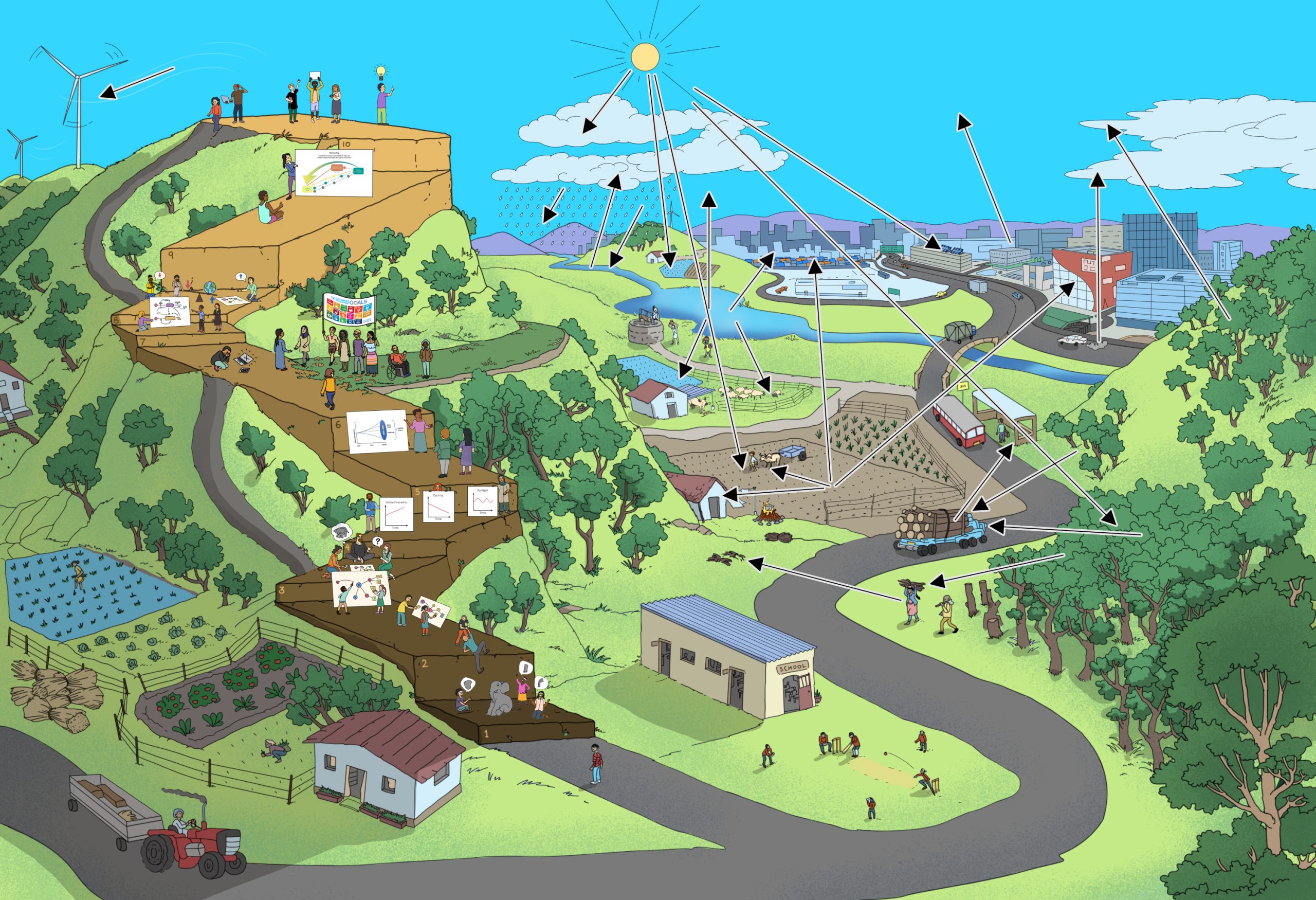Behaviour over Time Graphs
Suitable for Steps 4, 5
Duration
1 to 2 hours
Material Needed
Writing materials
Group size
Individuals, pairs or groups of four
Objective
To enable learners to:
understand trends and projections,
focus on patterns of change over time rather than on a single event, and
think about the underlying causes of those changes.
Description
Often, it is only when situations become alarming that we recognize them as problems. Changes over time and patterns of changes may not be adequately recorded and considered while making day-to-day decisions.
Some of the system feedbacks may surface after a long period of time. That is, an action taken now may have an effect sometime in the future, and not immediately. However, if changes are studied over time, they can help us focus on patterns of change over time rather than on single events. They help us think about the underlying causes of those changes.
Behaviour-over-time graphs (BoTGs) show how an element changes over time. The one important thing to remember about a BoTGs is that “time” must be plotted along the horizontal axis. The “behaviour,” of the element that changes over that time, is plotted on the vertical axis. The purpose of the graph is to picture how the behaviour changes as time progresses. Time can be in any unit that fits the behaviour: seconds, hours, days, years, etc.
The Variables
The behaviour can be anything that increases or decreases over time. For example, it can be the amount of money in a bank account left to accumulate interest, water level in a well, the number of bamboo clumps in a given area, or the number of livestock or people in a village. In these examples, currency units, metres, and numbers of clumps, livestock or people are plotted on the vertical or y-axis.
However, there are also many other important variables which increase and decrease over time but which cannot be measured in conventional units such as currency units or metres. For example, the enthusiasm of a cricket team in a game.
These “soft” variables can also be plotted and examined by discussing and deciding the scale on the vertical axis. So, if the enthusiasm of a cricket team could be thought of as highest at the start of the game, it then could be thought of as the high range and depicted by the number 10. When the team loses most of its wickets and defeat is certain, that point could be thought of as the lowest of the range and assigned the number 0. Alternatively, these points could be defined as “Low,” “Medium,” and “High”. The same idea applies to all other variables that do not have conventional measured units.
A BoTG can be used to plot and explore any change.
Unlike the typical graph, divide the BoTG X-axis in two sections. In the first section plot the current observations or perceptions. In the second, the trend in the future can be continued as different alternative scenarios: what is expected or predicted, and what is desirable to see happening in the future. There can be alternative scenarios or trend-lines for different predictions.








BoTG can be used in any curriculum area to support learners think more deeply about what they have learned, whether it is a story in literature, a topic in social studies, or a science experiment. In any case, it helps to lead learners through a series of steps in the discussion until they develop this thinking skill on their own.
These are questions to guide the graphing and the discussion:
1.What is changing?
If you look at the story or the historical developments or the experiment, what is changing over time? What is going up or down?
- Brainstorm a list of changes and write them down. Learners may generate several variables, both hard and soft.
- Ask learners to look for the underlying currents of change rather than just the events. What do they see increasing or decreasing with time?
- From the list, focus the discussion on those variables that are most important and central to the issues you want the learners to explore.
- At first, you may want to choose one variable to graph together as a group. Or, you might ask learners to work individually or in groups on either the same variable or several others.
2.How is it changing?
Help learners to draw their graphs and make sure that they depict what they want them to say. For example, if they say something is going up, the line on the graph needs to be going up. This may take practice for some learners at first.
- It helps to define the axes together. How long is the time? What is the variable and what do low and high values of it mean?
- Once a graph is drawn, learners should look at the line on the graph. Is the variable going up or down? Is it changing rapidly or slowly? Does it start out in one direction and then change direction? Does it level off or keep fluctuating?
- The idea is to identify the pattern of the behaviour, not every little detail. Learners are learning to “read” the graph and think about the change it describes.
3.Why is it changing?
Next, learners start to think about the behaviour itself. If something is going up, what is happening in the story or experiment to keep it going up? Why did it start to speed up, or go down, or level off? Try to look within the system itself for the causes of the behaviour. For example, a population would keep growing more quickly because as people have children, those children have even more children, and so on, until it becomes too crowded and the growth levels off.
Further questions to help learners think about how the variable’s behaviour over time fits into the system it is it part of:
4.Why is the change important?
What difference do these changes make to the rest of the story? How could it have turned out otherwise?
5.What are the relationships?
What are the most important variables and how do they relate to one another?
If learners plotted more than one variable, how do their graphs compare? Does one rise as the other falls, for example? If you plotted only one graph at first, does it suggest a graph of another variable?
The idea is to see how the parts of the system fit together, to think about what causes what.
6. System structure and behavior
The behaviour of a system depends on the way the system is organized. See different visualisations of systems behaviour varying over time.
Contribution to Systems Thinking competence
BoTGs help us to understand the structure of systems and vice-versa. They can help to look for patterns of change and try to understand their causes. When trying to understand the behaviour of a system, learners should have enough time to explore the “Why” in depth. The goal is not just to draw a graph but for learners to think this way!
References
- Richardson, G., & Lyneis, D. (1988).
- System Behaviour and Causal Loop Diagram http://www.public.asu.edu/~kirkwood/sysdyn/SDIntro/ch-1.pdf

